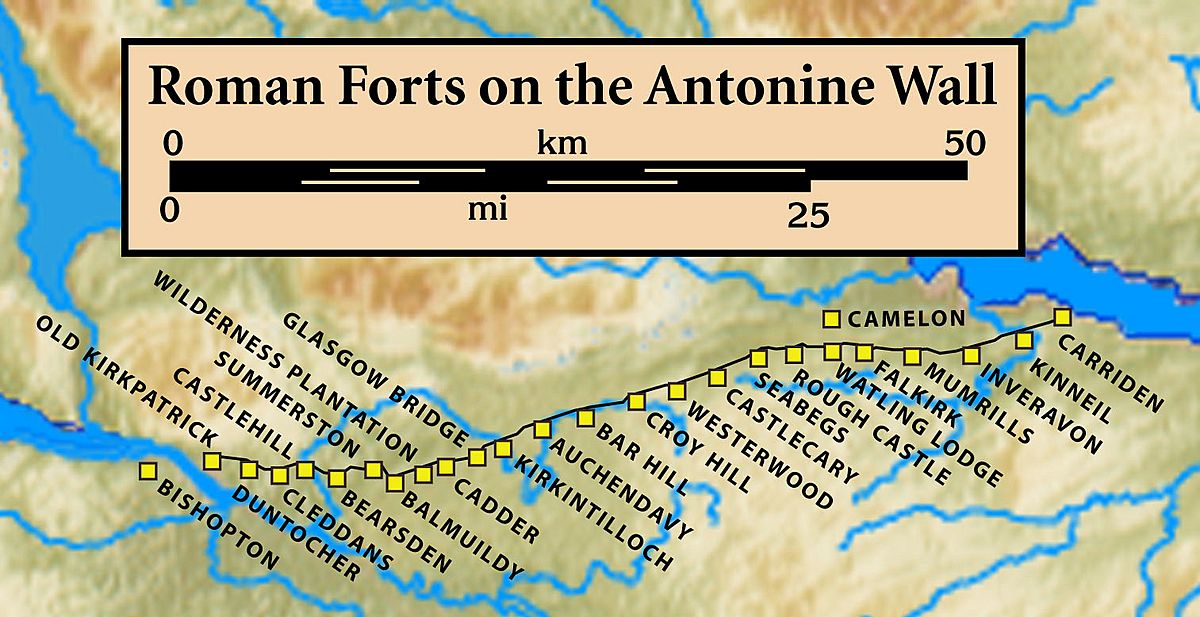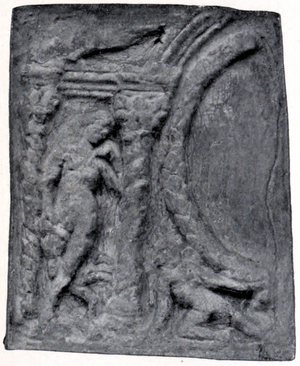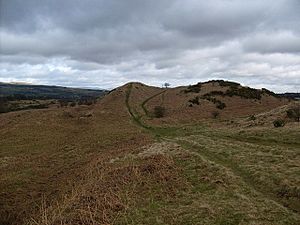Croy Hill facts for kids
Quick facts for kids Croy Hill |
|
|---|---|
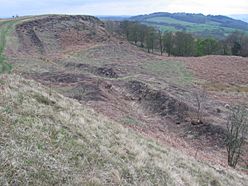
Antonine Wall at Croy Hill
|
|
| Alternative name(s) | Croy Hill Fort |
| Founded during the reign of | Antoninus Pius |
| Place in the Roman world | |
| Province | Britannia |
| Stationed military units | |
| — Legions — | |
| 6th | |
| Location | |
| County | North Lanarkshire |
| Country | |
| Site notes | |
| Excavation dates | 1890-1891, 1920, 1931, 1935, 1975–1978 |
| Archaeologists | Alexander Park, George Macdonald, William Hanson |
| Exhibitions | Hunterian Museum |
Croy Hill was an important Roman site in Scotland. It included a Roman fort, a smaller fortlet, and likely a temporary camp. These structures were part of the Antonine Wall, a large defensive barrier built by the Romans. Croy Hill is located near the village of Croy.
One unique thing about Croy Hill is its ditch. The Romans usually dug a ditch in front of their walls. But here, the ground was too hard. It was made of tough basalt and dolerite rock. Roman tools couldn't dig through it. This makes Croy Hill the only place on the Antonine Wall without a dug ditch.
Contents
What Was Found at Croy Hill?
Archaeologists have found many interesting items at Croy Hill. These discoveries help us learn about Roman life.
Religious Objects
Three special religious items were found:
- Pieces of a carving showing Jupiter Dolichenus. He was a Roman god of sky and thunder.
- An altar dedicated to the Nymphs. These were nature spirits in Roman myths.
- An altar for Mars, the Roman god of war.
Everyday Items and More
Other cool artifacts include:
- A bronze arm purse, used for carrying money.
- A storage jar filled with ashes.
- A piece of a "face mask" jar.
Most of these finds are now kept at the Hunterian Museum in Glasgow. Only four coins and an axe were found near the fort. A gravestone was also discovered. It shows a Roman soldier with other men, possibly his sons.
Who Explored Croy Hill?
Many people have studied Croy Hill over the years.
- Alexander Park was one of the first. He dug here in 1890 and 1891.
- Sir George Macdonald also led excavations. His work happened in 1920, 1931, and 1935.
- More recently, excavations took place from 1975 to 1978.
Croy Hill and the Antonine Wall
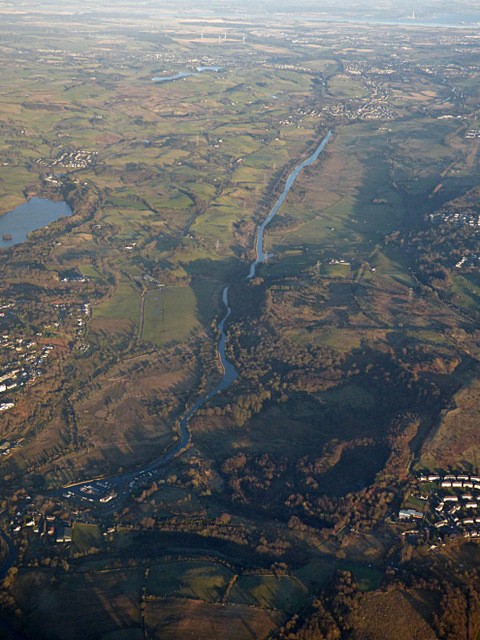
Croy Hill was an important part of the Antonine Wall. This wall was built by the Roman Emperor Antoninus Pius. It stretched across Scotland, marking the northern edge of the Roman Empire.
Nearby Forts
Croy Hill had other Roman forts as neighbors:
- To the west was Barr Hill.
- To the east was Westerwood.
Life at the Fort
Larger Roman forts could hold about 1000 soldiers. Even though soldiers were not allowed to marry, women and children likely lived nearby. There were probably also many civilians living around the fort. This created a small community around the Roman military base. A bath house, where soldiers could clean themselves, was found just outside one of the forts.
